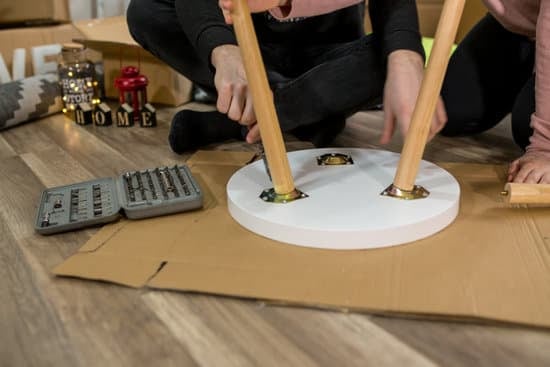Home improvements are an essential aspect of homeownership, as they not only enhance the aesthetics and functionality of a property but also increase its value. Many homeowners may wonder if they can claim home improvement expenses on their income tax returns to potentially save money. This article explores the possibilities of claiming home improvements on income tax and provides a comprehensive guide on how to navigate this process successfully.
When we talk about home improvements, we refer to any alterations or renovations made to a residential property that enhance its quality, value, or adapt it to specific needs. These can range from simple repairs and maintenance tasks to extensive remodeling projects. Home improvements serve multiple purposes, such as improving living conditions, increasing energy efficiency, accommodating medical necessities, or repairing damages caused by natural disasters.
Understanding the potential tax deductions available for home improvement expenses is crucial for homeowners seeking financial benefits while investing in their homes. The concept of tax deductions allows individuals to reduce their taxable income by deducting eligible expenses incurred during the tax year. While there are various allowable deductions, home improvements can often qualify for these deductions when certain criteria are met.
In this article, we will delve into the details of home improvement related deductions and explore which expenses can be claimed on your income tax returns. We will also outline the requirements for qualifying for these deductions and provide tips to maximize your savings through accurate record-keeping and appropriate filing procedures.
Whether you are considering making upgrades to your home or have recently completed renovation projects, understanding how you may benefit from claiming home improvement expenses on your income tax returns is essential for saving money and maximizing the value of your property.
Understanding Tax Deductions
What are Tax Deductions?
Tax deductions are expenses that can be subtracted from your taxable income, ultimately reducing the amount of income tax you owe. By taking advantage of these deductions, taxpayers can potentially save a significant amount of money. It is important to note that tax deductions differ from tax credits, as deductions reduce the amount of income subject to taxation, while credits directly reduce the amount of taxes owed.
Expenses Eligible for Tax Deductions
When it comes to claiming deductions on home improvements, certain expenses may qualify. These include costs related to repairs, renovations, and upgrades made to your primary residence or rental property. Home improvement expenses that enhance the value or efficiency of the property and those incurred due to medical necessity or natural disasters may also be eligible for deductions.
Examples of eligible home improvement expenses may include:
- Energy-efficient upgrades: Expenses related to installing energy-efficient windows, doors, insulation, solar panels, geothermal heat pumps, or other qualifying equipment.
- Medical necessity modifications: Costs associated with modifying a home for medical reasons such as installing ramps and handrails or making bathroom modifications.
- Repairs due to natural disasters: Expenses incurred in repairing damages caused by natural disasters such as wildfires, floods, hurricanes, or earthquakes.
It is important to consult with a tax professional or refer to IRS guidelines for specific details on allowable home improvement expenses and their eligibility for deductions.
Record-Keeping and Documentation
To claim home improvement expenses on your income tax return successfully, it is essential to maintain accurate records and documentation. This includes invoices, contracts, receipts, permits, and any other relevant documents that substantiate the expenses claimed. Additionally, it is advisable to take photographs before and after the improvements as further evidence.
By keeping meticulous records and organizing all supporting documents together in one place specifically designated for tax purposes (either physically or digitally), taxpayers can ensure they have the necessary evidence to claim deductions and withstand potential audits.
Remember, it is always a good practice to consult with a tax professional regarding your specific circumstances to maximize your tax savings and avoid any potential errors or problems when claiming home improvement expenses on your income tax return.
Qualifying for Home Improvement Tax Deductions
When it comes to claiming home improvement expenses on your income tax, there are certain eligibility criteria that you need to meet. In order for these expenses to be considered tax deductible, they must meet specific requirements set by the tax authorities. Additionally, it is important to keep accurate records and receipts to support your claims.
One of the key factors in qualifying for home improvement tax deductions is that the improvements must be made on your primary residence. This means that expenses related to improvements made on a secondary or investment property may not be eligible for deductions. Furthermore, the improvements must be considered necessary for the upkeep, maintenance, or enhancement of your home.
To successfully claim home improvement deductions, it is important to keep detailed records of all expenses incurred during the improvement process. This includes invoices, receipts, contracts, and other relevant documents. These records will serve as evidence when filing your income tax return and can help support your claim if audited by the tax authorities.
In addition to meeting eligibility criteria and keeping accurate records, there may also be limitations or restrictions imposed on claiming home improvement expenses. For example, some countries or regions may have specific guidelines regarding the types of improvements that are eligible for deductions. It is important to familiarize yourself with these rules to ensure that you comply with all necessary requirements.
Relevant Data
| Eligibility Criteria for Home Improvement Tax Deductions |
|---|
| – Improvements must be made on primary residence |
| – Expenses must be necessary and related to upkeep or enhancement of home |
| – Accurate records and receipts must be kept as evidence |
Home Improvement Expenses that can be Claimed on Income Tax
When it comes to claiming tax deductions, home improvement expenses can be a valuable opportunity for homeowners. By making certain eligible improvements to your property, you may be able to reduce your taxable income and potentially save money on your income tax bill. It’s important, however, to understand which home improvement expenses qualify for tax deductions.
Here is a list of specific home improvement expenses that can typically be claimed on income tax:
- Energy-efficient upgrades: If you have made energy-efficient improvements to your home, such as installing solar panels or energy-efficient windows and doors, you may be eligible for a tax credit or deduction. These upgrades not only benefit the environment but also save you money in the long run.
- Medical necessity modifications: If you have made modifications to your home due to medical necessity, such as installing wheelchair ramps or widening doorways for accessibility purposes, these expenses may also be eligible for tax deductions. It’s important to keep detailed records and documentation related to these modifications in order to claim them properly.
- Repairs from natural disasters: If your home has suffered damages from natural disasters like hurricanes, earthquakes, or floods, any repairs or restorations made as a result of these events may be eligible for tax deductions. Again, proper documentation is essential in order to support your claim.
It’s worth noting that while these specific expenses are generally eligible for tax deductions, there might be limitations and restrictions imposed by tax authorities on the amount that can be claimed or the duration within which the improvements must be made.
To ensure smooth filing and increase your chances of successfully claiming these deductions, it is crucial to keep accurate records and receipts for all home improvement expenses incurred throughout the year. This includes detailed invoices, receipts from contractors or suppliers, as well as any relevant permits or licenses obtained during the renovation process.
By understanding which home improvement expenses qualify for income tax deductions and maintaining proper records, homeowners can take advantage of the opportunity to save money while enhancing their living spaces. It’s important to consult with a tax professional or refer to the official tax guidelines in your country to ensure compliance and accuracy when claiming these deductions.
Limitations and Restrictions on Claiming Home Improvement Expenses
When it comes to claiming home improvement expenses on income tax, there are certain limitations and restrictions imposed by tax authorities that taxpayers need to be aware of. While home improvements can offer potential tax deductions, it is important to understand the rules surrounding these deductions in order to avoid any issues with the tax authority.
One common limitation on claiming home improvement expenses is the requirement that the improvements must be considered “capital expenditures” rather than ordinary repairs or maintenance. Generally, capital expenditures refer to significant improvements that add value or prolong the useful life of a property.
Examples of capital expenditures include adding a new room, installing a swimming pool, or renovating a kitchen. On the other hand, routine repairs and maintenance such as fixing a leaky faucet or painting walls would not qualify for tax deductions.
Another restriction is that only certain types of home improvement expenses are eligible for tax deductions. Homeowners cannot claim deductions for personal expenses or upgrades that do not directly relate to improving the property’s value or functionality. For example, installing luxurious amenities like a hot tub solely for personal enjoyment would not qualify for deductions.
Additionally, taxpayers must also meet specific criteria set by the tax authorities in order to claim home improvement expenses. These criteria may include requirements such as owning and occupying the property as their primary residence and using part of it for business purposes if applicable. It is essential to familiarize oneself with these eligibility criteria before claiming any home improvement expenses.
To ensure successful claims and avoid potential issues with the tax authority, it is crucial for homeowners to keep accurate records and receipts supporting their claimed expenses. This documentation should include proof of payment, detailed descriptions of the improvements made, and evidence showing how these improvements increase property value or enhance living conditions. Without proper records, taxpayers may face challenges in substantiating their claims during an audit.
Understanding these limitations and restrictions is vital when considering claiming home improvement expenses on income tax. By adhering to the guidelines and requirements set by the tax authorities, homeowners can confidently explore tax deductions for their eligible home improvement costs.
| Limitations and Restrictions on Claiming Home Improvement Expenses |
|---|
| – Capital expenditures vs ordinary repairs or maintenance |
| – Certain types of expenses not eligible for deduction |
| – Meeting specific criteria for eligibility |
| – Importance of keeping accurate records and receipts |
How to Claim Home Improvement Expenses on Income Tax
When it comes to claiming home improvement expenses on your income tax, there are some essential steps you need to follow. By properly filing these expenses, you can potentially save money and maximize your deductions. Here is a step-by-step guide on how to claim home improvement expenses on your income tax returns.
- Determine if you qualify: Before you start the process of claiming home improvement expenses, make sure that you meet the eligibility criteria set by the tax authorities. Typically, these criteria include requirements such as the improvements being made to your primary residence and not being for rental properties or vacation homes.
- Gather necessary documents: To claim home improvement expenses, you will need to have accurate records and receipts for all the work done. This includes invoices from contractors or suppliers, receipts for materials purchased, and any permits or licenses obtained for the improvements.
- Identify eligible expenses: Review the specific guidelines provided by the tax authorities to determine which home improvement expenses are eligible for deductions. Some common examples include energy-efficient upgrades (such as solar panels or insulation), modifications made for medical necessity (such as installing ramps or grab bars), and repairs due to natural disasters.
- Fill out the appropriate forms: When filing your income tax returns, you will need to fill out specific forms related to claiming home improvement expenses. These forms may vary depending on your country’s tax regulations and guidelines. Consult with a tax professional or refer to official government resources for accurate information on which forms to use.
- Provide accurate information: When filling out the forms, ensure that all required information is provided accurately and completely. Double-check your figures and calculations before submitting your tax returns to avoid any discrepancies that could delay processing or trigger an audit.
- Keep supporting documentation: Even after filing your income tax returns, it is important to keep copies of all supporting documentation related to your claimed home improvement expenses. This includes all receipts, invoices, contracts, and other relevant paperwork. Keeping these records will not only help you in case of an audit but also serve as a reference for future tax filings.
By following these steps, you can ensure that you are properly claiming your home improvement expenses on your income tax returns. Remember to consult with a tax professional or refer to official government resources for the most up-to-date and accurate information regarding claiming deductions in your jurisdiction. Taking advantage of these deductions can provide financial benefits while also improving the value and comfort of your home.
Common Mistakes to Avoid when Claiming Home Improvement Expenses
When it comes to claiming home improvement expenses on income tax, it’s important to be aware of common mistakes that taxpayers make. These mistakes can sometimes lead to deductions being denied or limited, causing taxpayers to miss out on potential savings. To ensure a successful claim, here are some common errors and misunderstandings to avoid:
- Failure to meet eligibility criteria: One of the most common mistakes is not meeting the eligibility criteria set by tax authorities. It’s crucial to understand the specific requirements for claiming home improvement expenses on income tax, such as using the property as your primary residence or meeting certain income limits. Before making any improvements, ensure that you qualify for deductions.
- Incorrect documentation and record-keeping: Accurate documentation and record-keeping are essential when claiming home improvement expenses. Many taxpayers overlook the importance of keeping receipts, invoices, and other relevant documents related to their home improvements. Without proper documentation, it can be challenging to prove the validity of your claim or calculate the correct deduction amount.
- Mixing personal and business expenses: Some individuals may use part of their homes for business purposes and mistakenly include these expenses as home improvement deductions. It’s important to separate personal and business-related expenses when claiming deductions on income tax. Make sure you only include expenditures directly related to improving your primary residence.
To avoid these mistakes and ensure a successful claim for home improvement expenses on income tax, here are a few tips:
- Familiarize yourself with the eligibility criteria set by tax authorities.
- Maintain accurate records and keep all relevant documents pertaining to your home improvements.
- Consult with a tax professional or accountant if you have any doubts or questions regarding eligible expenses.
- Take advantage of online tools or software that can help you organize your receipts and calculate deductions accurately.
By avoiding these common mistakes and following best practices in claiming home improvement expenses, taxpayers can maximize their savings while improving their homes.
Case Study
Case Study 1: Energy-Efficient Upgrades
In this case study, Mr. Smith decided to make energy-efficient upgrades to his home by installing solar panels and a smart thermostat. The total cost of these improvements was $20,000. As a result of these upgrades, Mr. Smith’s monthly energy bills significantly decreased, and he was able to claim a tax deduction for the expenses incurred.
By claiming the energy-efficient upgrades on his income tax, Mr. Smith was eligible for a federal tax credit known as the Residential Renewable Energy Tax Credit. This credit allowed him to deduct 30% of the total cost of the improvements from his taxable income.
Case Study 2: Medical Necessity Modifications
Mrs. Johnson had a serious medical condition that required her home to be modified for accessibility purposes. She installed ramps, widened doorways, and added grab bars in her bathroom. The total cost of these modifications amounted to $15,000.
Fortunately, Mrs. Johnson could claim these medical necessity modifications as a tax deduction under the Medical Expense Deduction provision. To qualify for this deduction, she needed written certification from her physician stating that these modifications were necessary for her medical condition.
Through this deduction, Mrs. Johnson was able to reduce her taxable income by $15,000, resulting in significant tax savings.
Case Study 3: Repairs due to Natural Disasters
Mr. Wilson’s home suffered extensive damage during a hurricane which required major repairs. He spent $25,000 repairing roof damage and replacing damaged windows due to the natural disaster.
The good news is that Mr. Wilson could claim these repair expenses as a tax deduction under the Casualty Loss Deduction provision if he lived in an area officially declared as a disaster area by the government. This deduction allows homeowners to deduct unreimbursed losses resulting from damage caused by natural disasters.
By claiming the repair expenses as a casualty loss deduction, Mr. Wilson was able to reduce his taxable income by $25,000, providing some financial relief during a challenging period.
These case studies highlight the practical applications and benefits of claiming home improvement expenses on income tax returns. By being aware of the eligible deductions and keeping accurate records, homeowners can significantly lower their tax liability while improving their homes. It is important to consult with a tax professional for specific guidance on eligibility and claim procedures to ensure compliance with tax regulations.
Conclusion
In conclusion, understanding and maximizing your home improvement tax deductions can have significant financial benefits while also improving the overall quality and value of your property. By taking advantage of eligible expenses that can be claimed on income tax, homeowners can effectively reduce their taxable income and potentially save a substantial amount of money.
Throughout this article, we have discussed the importance of keeping accurate records and receipts for claiming deductions, as well as the specific home improvement expenses that are eligible for tax deductions. From energy-efficient upgrades to repairs due to natural disasters, there are various ways in which homeowners can qualify for these deductions.
However, it is important to note that there may be limitations or restrictions imposed by tax authorities on claiming certain home improvement expenses. It is essential for taxpayers to familiarize themselves with these guidelines to ensure their claims meet the necessary criteria.
To successfully claim home improvement expenses on income tax returns, taxpayers should follow a step-by-step guide that includes submitting the appropriate forms, documents, and information required for filing the claim. Additionally, it is crucial to avoid common mistakes or misunderstandings when claiming these deductions in order to increase the likelihood of a successful claim.
Frequently Asked Questions
What home improvements are tax deductible IRS?
The IRS provides some tax deductions for certain home improvements, but it’s essential to understand the specific guidelines and limitations. Generally, expenses related to home improvements that qualify as medical expenses may be tax deductible. This includes modifications to accommodate a disability or improve accessibility, such as adding ramps or handrails.
Additionally, if you use part of your home exclusively for business purposes, you might be eligible for deductions on home office improvements or renovations. However, it’s crucial to consult with a tax professional or refer directly to the IRS guidelines for more details and to ensure compliance.
Can you write off home improvements on your income tax?
Yes, you can potentially write off certain home improvements on your income tax return. However, it depends on the nature of the home improvement and whether it meets specific criteria set by the IRS. As mentioned earlier, if your home improvement expenses qualify as medical expenses or are related to a home office used for business purposes, they may be eligible for tax deductions.
The IRS allows deductions for certain qualified medical expenses that exceed a percentage of your adjusted gross income. Similarly, if you meet the requirements outlined by the IRS for claiming a deduction on your home office space and related improvement expenses, such as remodeling or installing new equipment, you might be able to include those costs in your tax write-offs.
What are the tax breaks for home improvements in 2023?
It is impossible to accurately predict the tax breaks specifically associated with home improvements in 2023 since tax laws frequently change and depend on various factors like legislation and economic conditions. Tax breaks are subject to revisions made by lawmakers from year to year based on evolving needs and priorities.
What might be applicable now could differ in 2023 due to legislative changes at federal, state, or local levels. To stay informed about any potential tax breaks relating to home improvements in 2023 (or any other year), it is advisable to consult updated official sources such as the IRS website or seek advice from a qualified tax professional who can guide you based on current regulations.

I’m thrilled to have you here as a part of the Remodeling Top community. This is where my journey as an architect and remodeling enthusiast intersects with your passion for transforming houses into dream homes.





